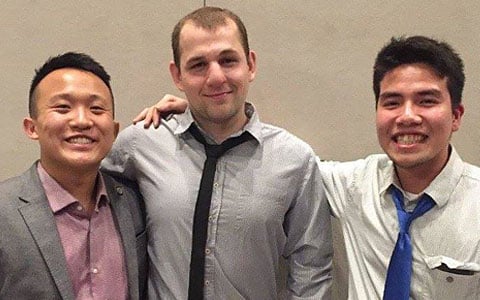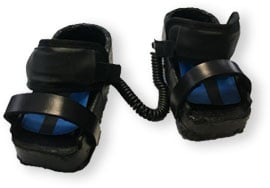A BME graduate design team was selected as the grand prize winner in the highly-competitive Intel-Cornel Cup challenge. The team won with GEAR — Game Enhancing Augmented Reality — bio-gaming shoes.
GEAR was created to serve as an assistive computer interface for individuals with limited upper limb functionality. The main goal of the team — which includes a quadrilateral amputee — was to transfer dexterous control from the hands to the feet. The device benefits people with disabilities, such as upper limb amputees, to retain complex control of computers, which currently requires hands and fingers.
The three team members are graduate students in the Johns Hopkins Biomedical Engineering program and are advisees of BME Professor Nitish Thakor. Team member Adam Li, of Los Angeles, CA, is studying Neuroengineering and is currently working in the Neuromedical Control Systems Laboratory and the Functional and Restorative Neurosurgery Unit at the National Institute of Health. Gyõrgy (George) Levay, of Budapest, Hungary, is working in the Neuroengineering & Biomedical Instrumentation Laboratory and specializing in algorithms for pattern recognition-based prosthesis control. Nhat Nate) Tran of Ho Chi Minh City, Vietnam is currently working in the Advanced Medical Instrumentation and Robotics Research Laboratory with a focus on surgical robotics and medical instrumentation for microsurgery and minimally invasive surgery.
Their bio-gaming device will enable the disabled to participate in video game play — found to be an effective platform for socialization, an outlet beneficial for amputees, among whom ~20–30% suffer from depression compared to a ~6% national average.


